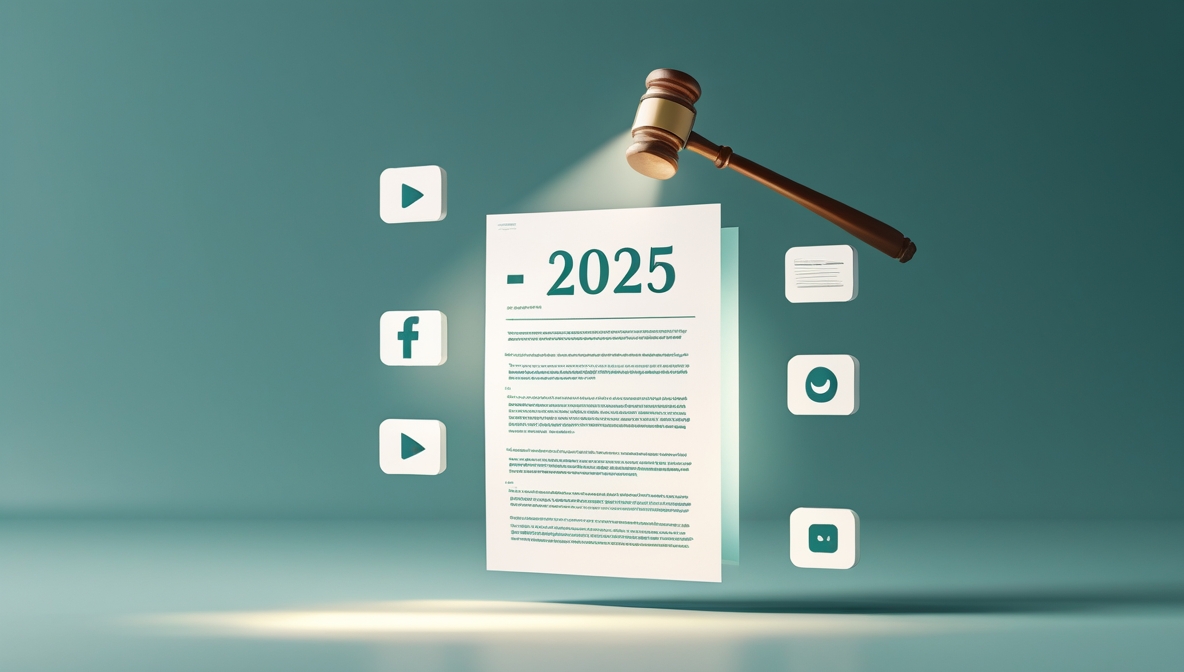Introduction to the Changing Landscape of Online Advertising
The digital advertising ecosystem is experiencing a seismic shift. With evolving technologies, consumer privacy concerns, and intensified global scrutiny, new regulations for online advertising are being enacted at an unprecedented pace. These changes are fundamentally altering how businesses can legally and ethically market their products and services online. It is critical for advertisers, agencies, and platforms to stay informed and compliant to avoid costly fines and reputational damage.
Global Overview of Online Advertising Regulations in 2025
The European Union: Strengthening GDPR Compliance
The General Data Protection Regulation (GDPR) remains a cornerstone of online privacy law in the EU. However, 2025 has seen the introduction of new directives and enforcement policies that elevate the compliance bar:
-
Explicit Consent: Marketers must now obtain granular consent for each type of data collected, with pre-ticked boxes no longer deemed valid.
-
Algorithmic Transparency: Companies utilizing AI for ad targeting must disclose how algorithms process user data.
-
Cookie Lifetime Restrictions: Cookies used for behavioral tracking now have a maximum lifespan of 6 months, down from 12.
Fines for non-compliance have risen sharply, with penalties reaching up to €40 million or 6% of global turnover, whichever is higher.
United States: The Rise of Federal Regulation and State Expansion
Though the U.S. has long lacked a single federal data privacy law, 2025 is seeing a shift. The newly enacted American Data Protection and Privacy Act (ADPPA) is establishing baseline national standards:
-
Opt-out Mechanisms: Users must be offered simple ways to opt out of tracking, especially for cross-platform behavioral ads.
-
Children’s Data Protections: Ads targeted to users under 17 are now subject to strict scrutiny under updated COPPA guidelines.
-
Advertising Transparency Portals: Companies must maintain public portals listing current advertising campaigns, targeting parameters, and third-party data use.
States like California, Virginia, and Colorado have also expanded their own privacy laws, creating a more complex regulatory patchwork.
Targeting and Personalization Under Scrutiny
The crux of most new regulations lies in audience targeting and behavioral personalization. Platforms and advertisers must now:
-
Provide clear justifications for data collection and use.
-
Demonstrate legitimate interest or obtain consent before leveraging first-party or third-party data.
-
Avoid profiling based on sensitive data such as political beliefs, religious affiliation, sexual orientation, or health status.
Advertisers using lookalike audiences or automated segmentation must log these processes and make them available for audits by regulatory bodies.
Transparency and Accountability: Ad Disclosures and Labelling
In response to the spread of disinformation and manipulative advertising practices, 2025 regulations require more visible and comprehensive ad disclosures:
-
“Sponsored” Labels: Paid content must be clearly marked with standardized visual cues and wording.
-
Ad Source Identification: Users must be able to see who paid for the ad, the platform used, and the targeting rationale.
-
Influencer Marketing Standards: Influencers must disclose paid partnerships with standardized tags, such as #Ad or #SponsoredContent, that are clearly visible and unambiguous.
Noncompliance is now treated as a deceptive marketing practice, subject to regulatory penalties and public takedowns.
AI and Automation in Ad Tech: Regulatory Impacts
As AI-driven advertising becomes mainstream, regulators are putting pressure on platforms and advertisers to manage risks associated with automation:
-
Bias Audits: Platforms using AI for targeting or bidding must perform and submit regular bias audits to ensure non-discriminatory outcomes.
-
Explainability Requirements: AI systems must be able to explain targeting logic in plain English to both users and regulators.
-
Human Oversight Mandates: Automated systems must include manual review checkpoints, especially in sensitive ad categories like finance, healthcare, or political content.
Companies must maintain compliance documentation and present this upon request to data protection authorities.
Ad Fraud, Viewability, and Click Attribution Reforms
2025 brings a wave of ad fraud prevention standards intended to increase advertising integrity and ROI accountability:
-
Viewability Standards: Advertisers can only be charged for ads deemed “viewable” — typically meaning 50% of pixels in view for 1 second for display, 2 seconds for video.
-
Click Attribution Limits: Attribution windows are now capped (e.g., 7-day click, 1-day view) to reduce misleading conversion metrics.
-
Anti-Bot Enforcement: Platforms must employ certified fraud detection technology, and advertisers must maintain logs for all campaign traffic sources.
Fines for ad fraud complicity, even if unintentional, have reached multi-million-dollar levels.
Third-Party Cookies and Server-Side Tracking: The New Norm
With Google Chrome phasing out third-party cookies, advertisers must embrace privacy-compliant alternatives:
-
First-Party Data Strategy: Collecting and ethically managing first-party data is now a core competitive advantage.
-
Server-Side Tagging: Provides more control and transparency than client-side scripts, helping meet regional privacy regulations.
-
Universal IDs: Consent-based identifiers like Unified ID 2.0 are emerging as industry standards, but face regulatory scrutiny depending on implementation.
Advertisers must clearly articulate their data sources and obtain meaningful consent to maintain compliance.
Cross-Border Advertising: Jurisdictional Pitfalls and Best Practices
Global advertising campaigns must now carefully navigate data sovereignty laws and cross-border compliance. Key recommendations include:
-
Localized Consent Management Platforms (CMPs): Ensure legal consistency across target countries.
-
Data Storage Regulations: Respect country-specific rules about where user data can be processed and stored.
-
Geo-Fencing Tools: Use advanced geo-targeting to avoid serving non-compliant ads in restricted territories.
Failure to comply with these rules could result in ad bans, user complaints, or legal injunctions.
What Businesses Must Do Now to Stay Compliant
To remain competitive and compliant under the new regulations for online advertising, businesses must:
-
Conduct regular privacy audits of all ad operations.
-
Partner with legal counsel and data protection officers to review policies.
-
Update privacy policies, CMPs, and user interfaces to meet consent standards.
-
Train marketing and development teams on regulatory updates and enforcement risks.
-
Invest in compliant marketing technologies and ethical data sourcing strategies.
Conclusion: Regulatory Readiness Is the Future of Advertising
The evolving regulatory framework for online advertising in 2025 signals a paradigm shift. Advertisers that prioritize transparency, data ethics, and user empowerment will not only avoid penalties but also build stronger, trust-based customer relationships. The era of opaque tracking and unchecked targeting is ending. The future belongs to businesses that adapt fast, stay informed, and lead with privacy-first strategies.




